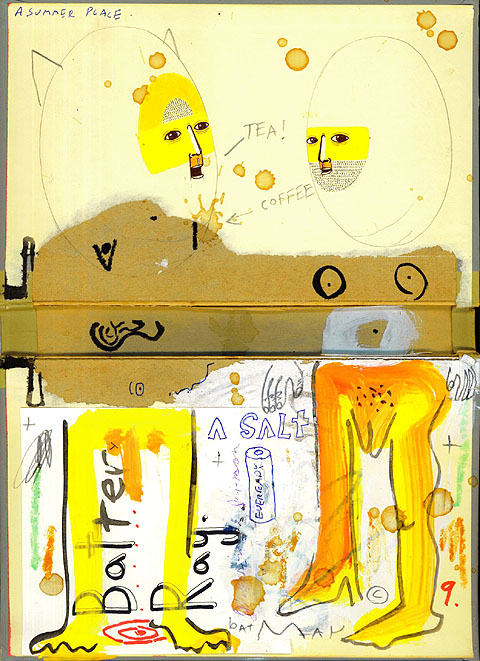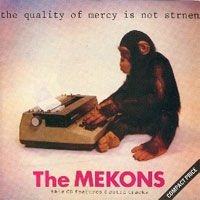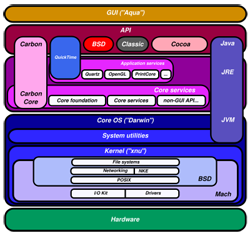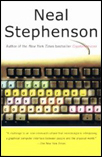The following quote was in AP story i read in MIT’s Technology Review this morning about Microsoft licensing Adobe’s mobile Flash and PDF software.
“Flash content is the most prolific content on the web today; it is the way people express themselves on the Internet,” Adobe spokesman Gary Kovacs said.
Hmmm . . . . i suppose it might be true that if you add up all the gigabytes of You-Tube videos that more content on the web is in Flash than any other format. But to say that Flash is the way that most people express themselves seems just a tad disingenuous. You-Tube and other sites convert amateur production into Flash; only a small minority of that content is actually created in Flash. But the reason i’m bothering to post this isn’t to call Adobe out for misleading numbers it’s to raise a warning flag — actually two warning flags
1. Converting amateur production into Flash as You-Tube and other for-profit sites do, effectively moves that content into a proprietary format which resists re-use and re-mix. This is not a good thing.
2. Flash is not easy software to master. If it were true that most conent on the web was created natively in Flash rather than converted into it after the fact, that would mean that content creation had moved decisively into the province of the professional, returning us to the built-in the hierarchies of print and broadcast media. Also not a good thing.
Category Archives: Remix
a safe haven for fan culture
The Organization for Transformative Works is a new “nonprofit organization established by fans to serve the interests of fans by providing access to and preserving the history of fanworks and fan culture in its myriad forms.”
Interestingly, the OTW defines itself -? and by implication, fan culture in general -? as a “predominately female community.” The board of directors is made up of a distinguished and, diverging from fan culture norms, non-anonymous group of women academics spanning film studies, english, interaction design and law, and chaired by the bestselling fantasy author Naomi Novik (J.K. Rowling is not a member). In comments on his website, Ethan Zuckerman points out that
…it’s important to understand the definition of “fan culture” – media fandom, fanfic and vidding, a culture that’s predominantly female, though not exclusively so. I see this statement in OTW’s values as a reflection on the fact that politically-focused remixing of videos has received a great deal of attention from legal and media activists (Lessig, for instance) in recent years. Some women who’ve been involved with remixing television and movie clips for decades, producing sophisticated works often with incredibly primitive tools, are understandably pissed off that a new generation of political activists are being credited with “inventing the remix”.
In a nod to Virginia Woolf, next summer the OTW will launch “An Archive of One’s Own,” a space dedicated to the preservation and legal protection of fan-made works:
An Archive Of Our Own’s first goal is to create a new open-source software package to allow fans to host their own robust, full-featured archives, which can support even an archive on a very large scale of hundreds of thousands of stories and has the social networking features to make it easier for fans to connect to one another through their work.
Our second goal is to use this software to provide a noncommercial and nonprofit central hosting place for fanfiction and other transformative fanworks, where these can be sheltered by the advocacy of the OTW and take advantage of the OTW’s work in articulating the case for the legality and social value of these works.
OTW will also publish an academic journal and a public wiki devoted to fandom and fan culture history. All looks very promising.
britney replay
Sorry to sink for a moment into celebrity gossipsville, but this video had me utterly mesmerized for the past four minutes. Basically, this guy’s arguing that Britney Spears’ sub-par performance at the VMAs this weekend was do to a broken heel on one of her boots, and he goes to pretty serious lengths to prove his thesis. I repost it here simply as an example of how incredibly pliable and reinterpretable media objects have become through digital editing tools and distribution platforms like YouTube. The minute precision of the editing, the frequent rewinds and replays, and the tweaky stop/start pacing of the inserted commentaries transform the tawdry, played-to-death Britney clip into a fascinating work of obsession.
Heads up: Viacom has taken the video down. No great loss, but we now have a broken post, a tiny monument to the web’s impermanence.
(via Ann Bartow on Sivacracy)
audiovisual heritage double play
Two major preservation and access initiatives just reported by Peter Brantley over at O’Reilly Radar (1 and 2):
1. Reframe (set to launch in September ’07)
The Reframe project is a new initiative of Renew Media in partnership with Amazon and with major support from the John D. & Catherine T. MacArthur Foundation, which promises to offer exciting solutions for the dissemination of important media arts and the preservation and accessibility of our visual heritage.
The Reframe project will help connect audiences of independent media to a robust collection of media arts via an integrated, resourceful website. Reframe will aggregate content from individual filmmakers, broadcasters, distributors, public media resources, archives, libraries and other sources of independent and alternative media. Serving as a both an aggregator of content and a powerful marketing tool, Reframe enables content-holders to digitize, disseminate and make available their content to a vast potential audience via a powerful online resource.
Renew Media will create a specialized Reframe website, which will interact with the Amazon storefront, to assist institutions (universities, libraries or museums) and consumers of niche content in browsing, finding, purchasing or renting Reframe content. Reframe website visitors will find it easy to locate relevant content through a rich menu of search and retrieval tools, including conventional search, recommender systems, social networking tools and curated lists. Reframe will allow individual viewers to rate and discuss the films they have seen and to sort titles according to their popularity among users with similar interests.
2. Library of Congress awards to preserve digitized and born-digital works
The Library of Congress, through its National Digital Information Infrastructure and Preservation Program (NDIIPP), today announced eight partnerships as part of its new Preserving Creative America initiative to address the long-term preservation of creative content in digital form. These partners will target preservation issues across a broad range of creative works, including digital photographs, cartoons, motion pictures, sound recordings and even video games. The work will be conducted by a combination of industry trade associations, private sector companies and nonprofits, as well as cultural heritage institutions.
Several of the projects will involve developing standardized approaches to content formats and metadata (the information that makes electronic content discoverable by search engines), which are expected to increase greatly the chances that the digital content of today will survive to become America’s cultural patrimony tomorrow. Although many of the creative content industries have begun to look seriously at what will be needed to sustain digital content over time, the $2.15 million being awarded to the Preserving Creative America projects will provide added impetus for collaborations within and across industries, as well as with libraries and archives.
Partners include the Academy of Motion Picture Arts and Sciences, the American Society of Media Photographers, ARTstor and others. Go here and scroll down part way to see the full list.
One project that caught my and Peter’s eye is an effort by the University of Illinois at Urbana-Champaign to address a particularly vexing problem: how to preserve virtual environments and other complex interactive media:
Interactive media are highly complex and at high risk for loss as technologies rapidly become obsolete. The Preserving Virtual Worlds project will explore methods for preserving digital games and interactive fiction. Major activities will include developing basic standards for metadata and content representation and conducting a series of archiving case studies for early video games, electronic literature and Second Life, an interactive multiplayer game. Second Life content participants include Life to the Second Power, Democracy Island and the International Spaceflight Museum. Partners: University of Maryland, Stanford University, Rochester Institute of Technology and Linden Lab.
moby-dick animated
Alex Itin has done it again. Here it is: “Orson Whales,” an intertextual fantasia on Moby-Dick and Orson Welles set to the savage drums of John Bonham. Each frame is a page of this edition of the Melville text, painted and photographed and strung together in iMovie.
What you’re seeing is the entire book (actually two full copies – Alex can only paint on one side of each page because of bleed-through, so to get the whole text he had to double up). Here’s some of it stacked up in the studio (this is months of work):

The soundtrack is detritus gathered from web searches, a hunt for the white whale through a sea of tangents – appropriate, really, for the great book, which is so notoriously (and gloriously) tangential.
Alex: “The soundtrack is built from searching “moby dick” on You Tube (I was looking for Orson’s Preacher from the Huston film from the fifties) I couldn’t find the preacher, but did find tons of Led Zep and drummers doing Bonzo and a little Orson……. makes for a nice Melville in the end.”
Also check out his animation, same technique, of Ulysses. Bravo, Alex! (and happy birthday)!
jonathan lethem: the ecstasy of influence
If you haven’t already, check out Jonathan Lethem’s essay in the latest issue of Harper’s on the trouble with copyright. Nothing particularly new to folks here, but worth reading all the same — an elegant meditation by an elegant writer (and a fellow Brooklynite) on the way that all creativity is actually built on appropriation, reuse or all-out theft:
Any text is woven entirely with citations, references, echoes, cultural languages, which cut across it through and through in a vast stereophony. The citations that go to make up a text are anonymous, untraceable, and yet already read; they are quotations without inverted commas. The kernel, the soul–let us go further and say the substance, the bulk, the actual and valuable material of all human utterances–is plagiarism. For substantially all ideas are secondhand, consciously and unconsciously drawn from a million outside sources, and daily used by the garnerer with a pride and satisfaction born of the superstition that he originated them; whereas there is not a rag of originality about them anywhere except the little discoloration they get from his mental and moral caliber and his temperament, and which is revealed in characteristics of phrasing. Old and new make the warp and woof of every moment. There is no thread that is not a twist of these two strands. By necessity, by proclivity, and by delight, we all quote. Neurological study has lately shown that memory, imagination, and consciousness itself is stitched, quilted, pastiched. If we cut-and-paste our selves, might we not forgive it of our artworks?
the power of collaboration and remix culture — the exquisite corpse goes video
Yet one more reason to check in to Alex Itin’s remarkable blog if you haven’t recently or ever. As you may have read here several weeks ago, alex started a group on Flickr, The Library Project, for people to post works that have been created by two or more artists, building serially on each other’s efforts. Last October Alex posted a beautiful video he made as an homage to the mystical Alpine light know as die alpen lumen. In a nod to the exquisite corpse form of The Library Project, a Japanese artist, Eat A Bug, posted a film he made in response. Serious kudos to alex and all his fellow artists who are demonstrating the power of collaboration and remix culture.
the library project: a networked art experiment

Digital collaboration with me-jade, dou_ble_you and others in the Flickr Library Project
As he recently reflected upon here, Alex Itin has long been working at the border zones of art forms, moving in recent years to the strange intersection of paint and pixels. His blog is one of the most wildly inventive uses of that form, combining blazing low-res images of his paintings with text, photographs, short films, animated GIFs and audio mashups. All of this is done within the constraints of the blog’s scroll-like form — a constraint which Alex embraces, even relishes. I sometimes imagine the scroll endlessly emitting from Alex’s head like tape from a cash register, a continuous record of his transactions with the world.
ITIN place has been on the web for nearly two years now. In his second year, Alex began to explore new avenues out of the blog, establishing a presence on social media sites like Flickr, YouTube, Vimeo (a classier YouTube) and MySpace. Through these networked rovings, Alex has found a larger audience for his work, attracting new “readers” back to the blog where the various transmitted videos and images are reassembled in the scroll. He’s also established relationships with a number of other artists making interesting use of the web, particularly on Flickr and Vimeo. Recently, Alex invited a number of folks from the Flickr community to participate in a collaborative art project — a kind of exquisite corpse game via post. Here’s Alex:
The idea is that one artist takes a hardcover from a book, tears out the pages and draws in one half (or half draws in both halves) of the binder/diptyque. In a nod to Ray Johnson, the two books are mailed (swapped) and Each of these will be finished by the other. The results are posted in a Flicker group called (what else) The Library Project. From this group, hopefully a show will be curated for New York, or Paris, or Basel, or Berlin, or wherever anyone wants to show this project. It should be deliciously portable… get working…get collaborating…get reading!
As of this writing, the Library has racked up 278 members and has 205 images in its pool. A few of these are collaborations that have already made their trek across land, sea and air, others are purely digital combinations, while still others are simply book-inspired works submitted in the spirit of the project.
Alex has been documenting the process on his blog, weaving in some of the images. Styles combine, narratives emerge. In one video (excerpted here) he films himself receiving his first half-completed book from a Canadian artist known as driftwould. He unpacks the drawings and lets out a “wow,” than a sort of humbled sigh. It’s a nice moment of return to the physical world after several years of probing the digital ether.
And here’s how that turned out:

Read Alex’s documentation here and here.
Stay tuned for more — the project has only just begun. Plus, we’ve begun designing a fantastic new interface for Alex’s blog archives, which we’ll talk more about soon.
an excursion into old media
![]()
 Last summer on a trip to Canada I picked up a copy of Darren Wershler-Henry’s The Iron Whim: a Fragmented History of Typewriting. It’s a look at our relationship with one particular piece of technology through a compound eye, investigating why so many books striving to be “literary” have typewriter keys on the cover, novelists’ feelings for their typewriters, and the complicated relationship between typewriter making and gunsmithing, among a great many other things. The book ends too soon, as Wershler-Henry doesn’t extend his thinking about typewriters and writing into broader conclusions about how technology affects writing (for that see Hugh Kenner’s The Mechanic Muse) but it’s still worth tracking down.
Last summer on a trip to Canada I picked up a copy of Darren Wershler-Henry’s The Iron Whim: a Fragmented History of Typewriting. It’s a look at our relationship with one particular piece of technology through a compound eye, investigating why so many books striving to be “literary” have typewriter keys on the cover, novelists’ feelings for their typewriters, and the complicated relationship between typewriter making and gunsmithing, among a great many other things. The book ends too soon, as Wershler-Henry doesn’t extend his thinking about typewriters and writing into broader conclusions about how technology affects writing (for that see Hugh Kenner’s The Mechanic Muse) but it’s still worth tracking down.
It did start me thinking about my use of technology. Back in junior high I was taught to type on hulking IBM Selectrics, but the last time I’d used a typewriter was to type up my college application essays. (This demonstrates my age: my baby brother’s interactions with typewriters have been limited to once finding the family typewriter in the basement; though he played with it, he says that he “never really produced anything of note on it,” and he found my query about whether or not he’d typed his college essays so ridiculous as not to merit reply.) Had I been missing out? A little investigation revealed a thriving typewriter market on eBay; for $20 (plus shipping & handling) I bought myself a Hermes Baby Featherweight. With a new ribbon and some oiling it works well, though it’s probably from the 1930s.
 Next I got myself a record player. I would like to note that this acquisition didn’t immediately follow my buying a typewriter: old technology isn’t that slippery a slope. This was because I happened to see a record player that was cute as a button (a Numark PT-01) and cheap. It’s also because much of the music I’ve been listening to lately doesn’t get released on CD: dance music is still mostly vinyl-based, though it’s made the jump to MP3s without much trouble. There wasn’t much reasoning past that: after buying my record player I started buying records, almost all things I’d previously heard as MP3s. And, of course, I’d never owned a record player and I was curious what it would be like.
Next I got myself a record player. I would like to note that this acquisition didn’t immediately follow my buying a typewriter: old technology isn’t that slippery a slope. This was because I happened to see a record player that was cute as a button (a Numark PT-01) and cheap. It’s also because much of the music I’ve been listening to lately doesn’t get released on CD: dance music is still mostly vinyl-based, though it’s made the jump to MP3s without much trouble. There wasn’t much reasoning past that: after buying my record player I started buying records, almost all things I’d previously heard as MP3s. And, of course, I’d never owned a record player and I was curious what it would be like.
![]()
So what happened when I started using this technology of an older generation? The first thing you notice about using a typewriter (and I’m specifically talking about using a non-electric typewriter) is how much sense it makes. When my typewriter arrived, it was filthy. I scrubbed the gunk off the top, then unscrewed the bottom of it to get at the gunk inside it. Inside, typewriters turn out to be simple machines. A key is a lever that triggers the hammer with the key on it. The energy from my action of pressing the key makes the hammer hit the paper. There are some other mechanisms in there to move the carriage and so on, but that’s basically it.
 A record player’s more complicated than a typewriter, but it’s still something that you can understand. Technologically, a record player isn’t very complicated: you need a motor that turns the record at a certain speed, a pickup, something to turn the vibrations into sound, and an amplifier. Even without amplification, the needle in the groove makes a tiny but audible noise: this guy has made a record player out of paper. If you look at the record, you can see from the grooves where the tracks begin and end; quiet passages don’t look the same as loud passages. You don’t get any such information from a CD: a burned CD looks different depending on how much information it has on it, but the bottom from every CD from the store looks completely identical. Without a label, you can’t tell whether a disc is an audio CD, a CD-ROM, or a DVD.
A record player’s more complicated than a typewriter, but it’s still something that you can understand. Technologically, a record player isn’t very complicated: you need a motor that turns the record at a certain speed, a pickup, something to turn the vibrations into sound, and an amplifier. Even without amplification, the needle in the groove makes a tiny but audible noise: this guy has made a record player out of paper. If you look at the record, you can see from the grooves where the tracks begin and end; quiet passages don’t look the same as loud passages. You don’t get any such information from a CD: a burned CD looks different depending on how much information it has on it, but the bottom from every CD from the store looks completely identical. Without a label, you can’t tell whether a disc is an audio CD, a CD-ROM, or a DVD.
![]()
 There’s something admirably simple about this. On my typewriter, pressing the A key always gets you the letter A. It may be an uppercase A or a lowercase a, but it’s always an A. (Caveat: if it’s oiled and in good working condition and you have a good ribbon. There are a lot of things that can go wrong with a typewriter.) This is blatantly obvious. It only becomes interesting when you set it against the way we type now. If I type an A key on my laptop, sometimes an A appears on my screen. If my computer’s set to use Arabic or Persian input, typing an A might get me the Arabic letter ش. But if I’m not in a text field, typing an A won’t get me anything. Typing A in the Apple Finder, for example, selects a file starting with that letter. Typing an A in a web browser usually doesn’t do anything at all. On a computer, the function of the A key is context-specific.
There’s something admirably simple about this. On my typewriter, pressing the A key always gets you the letter A. It may be an uppercase A or a lowercase a, but it’s always an A. (Caveat: if it’s oiled and in good working condition and you have a good ribbon. There are a lot of things that can go wrong with a typewriter.) This is blatantly obvious. It only becomes interesting when you set it against the way we type now. If I type an A key on my laptop, sometimes an A appears on my screen. If my computer’s set to use Arabic or Persian input, typing an A might get me the Arabic letter ش. But if I’m not in a text field, typing an A won’t get me anything. Typing A in the Apple Finder, for example, selects a file starting with that letter. Typing an A in a web browser usually doesn’t do anything at all. On a computer, the function of the A key is context-specific.
 What my excursion into old technology makes me notice is how comparatively opaque our current technology is. It’s not hard to figure out how a typewriter works: were a monkey to decide that she wanted to write Hamlet, she could figure out how to use a typewriter without any problem. (Though I’m sure it exists, I couldn’t dig up any footage on YouTube of a monkey using a record player. This cat operating a record player bodes well for them, though.) It would be much more difficult, if not impossible, for even a monkey and a cat working together to figure out how to use a laptop to do the same thing.
What my excursion into old technology makes me notice is how comparatively opaque our current technology is. It’s not hard to figure out how a typewriter works: were a monkey to decide that she wanted to write Hamlet, she could figure out how to use a typewriter without any problem. (Though I’m sure it exists, I couldn’t dig up any footage on YouTube of a monkey using a record player. This cat operating a record player bodes well for them, though.) It would be much more difficult, if not impossible, for even a monkey and a cat working together to figure out how to use a laptop to do the same thing.
Obviously, designing technologies for monkeys is a foolish idea. Computers are useful because they’re abstract. I can do things with it that the makers of my Hermes Baby Featherweight couldn’t begin to imagine in 1936 (although I am quite certain than my MacBook Pro won’t be functional in seventy years). It does give me pause, however, to realize that I have no real idea at all what’s happening between when I press the A key and when an A appears on my screen. In a certain sense, the workings of my computer are closed to me.
![]()

Let me add some nuance to a previous statement: not only are computers abstract, they have layers of abstraction in them. Somewhere deep inside my computer there is Unix, then on top of that there’s my operating system, then on top of that there’s Microsoft Word, and then there’s the paper I’m trying to write. (It’s more complicated than this, I know, but allow me this simplification for argument’s sake.) But these layers of abstraction are tremendously useful for the users of a computer: you don’t have to know what Unix or an operating system is to write a paper in Microsoft Word, you just need to know how to use Word. It doesn’t matter whether you’re using a Mac or a PC.
The world wide web takes this structure of abstraction layers even further. With the internet, it doesn’t matter which computer you’re on as long as you have an internet connection and a web browser. Thus I can go to another country and sit down at an internet café and check my email, which is pretty fantastic.
And yet there are still problems. Though everyone can use the Internet, it’s imperfect. The same webpage will almost certainly look different on different browsers and on different computers. This is annoying if you’re making a web page. Here at the Institute, we’ve spent ridiculous amounts of time trying to ascertain that video will play on different computers and in different web browsers, or wondering whether websites will work for people who have small screens.
A solution that pops up more and more often is Flash. Flash content works on any computer that has the Flash browser plugin, which most people have. Flash content looks exactly the same on every computer. As Ben noted yesterday, Flash video made YouTube possible, and now we can all watch videos of cats using record players.
But there’s something that nags about Flash, the same thing that bothers Ben about Flash, and in my head it’s consonant with what I notice about computers after using a typewriter or a record player. Flash is opaque. Somebody makes the Flash & you open the file on your computer, but there’s no way to figure out exactly how it works. The View Source command in your web browser will show you the relatively simple HTML that makes up this blog entry; should you be so inclined, you could figure out exactly how it worked. You could take this entry and replace all the pictures with ones that you prefer, or you could run the text through a faux-Cockney filter to make it sound even more ridiculous than it does. You can’t do the same thing with Flash: once something’s in Flash, it’s in Flash.
 A couple years ago, Neal Stephenson wrote an essay called “In the Beginning Was the Command Line,” which looked at why it made a difference whether you had an open or closed operating system. It’s a bit out of date by now, as Stephenson has admitted: while the debate is the same, the terms have changed. It doesn’t really matter which operating system you use when more and more of our work is being done on web applications. The question of whether we use open or closed systems is still important: maybe it’s important to more of us, now that it’s about how we store our text, our images, our audio, our video.
A couple years ago, Neal Stephenson wrote an essay called “In the Beginning Was the Command Line,” which looked at why it made a difference whether you had an open or closed operating system. It’s a bit out of date by now, as Stephenson has admitted: while the debate is the same, the terms have changed. It doesn’t really matter which operating system you use when more and more of our work is being done on web applications. The question of whether we use open or closed systems is still important: maybe it’s important to more of us, now that it’s about how we store our text, our images, our audio, our video.
social powerpointing, or, the darker side of flash
SlideShare is a new web application that lets you upload PowerPoint (.ppt and .pps) or OpenOffice (.odp) slideshows to the web for people to use and share. The site (which is in an invite-only beta right now, though accounts are granted within minutes of a request) feels a lot like the now-merged Google Video and YouTube. Slideshows come up with a unique url, copy-and-paste embed code for bloggers, tags, a comment stream and links to related shows. Clicking a “full” button on the viewer controls enlarges the slideshow to fill up most of the screen. Here’s one I found humorously diagramming soccer strategies from various national teams:
Another resemblance to Google Video and YouTube: SlideShare rides the tidal wave of Flash-based applications that has swept through the web over the past few years. By achieving near-ubiquity with its plugin, Flash has become the gel capsule that makes rich media content easy to swallow across platform and browser (there’s a reason that the web video explosion happened when it did, the way it did). But in a sneaky way, this has changed the nature of our web browsers, transforming them into something that more resembles a highly customizable TV set. And by this I mean to point out that Flash inhibits the creative reuse of the materials being delivered since Flash-wrapped video (or slideshows) can’t, to my knowledge, be easily broken apart and remixed.
Where once the “view source” ethic of web browsers reigned, allowing you to retrieve the underlying html code of any page and repurpose all or parts of it on your own site, the web is becoming a network of congealed packages — bite-sized broadcast units that, while nearly effortless to disseminate through linking and embedding, are much less easily reworked or repurposed (unless the source files are made available). The proliferation of rich media and dynamic interfaces across the web is no doubt exciting, but it’s worth considering this darker side.
